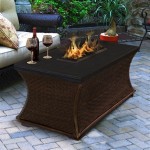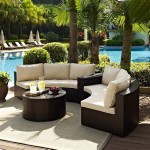Essential Considerations for DIY Outdoor Patio Furniture Plans
Creating a comfortable and stylish outdoor living space requires careful planning and the right furniture. Building your own patio furniture allows you to customize the design, save money, and create pieces that perfectly complement your outdoor aesthetic. However, successful DIY outdoor furniture requires a well-defined plan that considers essential aspects like materials, durability, comfort, and style.
Material Selection: Durability and Aesthetics
The choice of materials is crucial for outdoor furniture as it directly impacts durability and aesthetics. Consider materials such as:
- Pressure-treated lumber: Affordable and resistant to rot and insects.
- Cedar: Naturally weather-resistant and has a beautiful reddish-brown hue.
- Teak: Premium hardwood with exceptional durability, low maintenance, and a rich golden brown color.
- Recycled plastic: Eco-friendly option with high durability and resistance to fading.
Design: Functionality and Comfort
The design of your patio furniture should prioritize functionality and comfort. Consider the following aspects:
- Dimensions: Ensure the furniture fits within the available space.
- Seating height: Standard height is around 18 inches, but you can adjust it for taller or shorter people.
- Back support: Provide comfortable lumbar support for extended seating.
- Cushions: Add cushions for enhanced comfort, but choose weather-resistant fabrics.
Joints and Fasteners: Strength and Durability
Proper joints and fasteners are essential for the strength and durability of your furniture. Use:
- Galvanized or stainless steel screws: Resistant to rust and corrosion.
- Bolts and nuts: Provide secure connections for heavy-duty items.
- Corner brackets: Reinforce joints and prevent racking.
- Wood glue: Adds additional strength and prevents squeaking.
Style and Personalization: Reflecting Your Taste
Your patio furniture should reflect your personal style and complement your outdoor décor. Consider:
- Traditional: Classic designs with clean lines and neutral colors.
- Contemporary: Modern and minimalist designs with bold shapes and bright colors.
- Coastal: Inspired by seaside living, often featuring white, blue, and natural wood.
- Rustic: Uses rugged materials like unfinished wood and metal for a cozy and charming look.
Cost Considerations: Balancing Budget and Quality
DIY patio furniture can be cost-effective compared to purchasing pre-made items. However, factor in the cost of materials, tools, and any hardware required. Choose materials that balance quality and affordability, and consider buying materials in bulk to save money.
Safety Precautions: Ensuring Enjoyment and Longevity
Safety is paramount when building outdoor furniture. Take these precautions:
- Wear appropriate safety gear: Gloves, safety glasses, and a mask.
- Use sharp tools: Dull tools increase the risk of accidents.
- Secure joints properly: Loose joints can cause furniture to collapse.
- Treat wood surfaces: Protect wood from rot and weather damage with sealants or stains.
Maintenance and Longevity: Preserving Your Investment
Regular maintenance ensures the longevity of your DIY patio furniture. Clean surfaces regularly, tighten loose screws or bolts, and reapply sealants or stains as needed to maintain its appearance and functionality. Storing furniture during inclement weather or when not in use can further extend its lifespan.

Diy Outdoor Furniture Plans Patio

Top 10 Most Popular Diy Outdoor Furniture Plans The Design Confidential
:max_bytes(150000):strip_icc()/homemadebycarmona-386463f43539452b8b033a4108701959.jpg?strip=all)
23 Diy Patio Furniture Plans

Diy Outdoor Furniture 10 Easy Projects Bob Vila

Diy Modern Outdoor Sofa Plans 731 Woodworks

Diy Patio Chair Plans And Tutorial Step By S Photos

20 Most Popular Outdoor Furniture Plans Ana White

Easy Diy Outdoor Patio Furniture Plans Ideas The Garden Glove

37 Amazing Diy Outdoor Furniture Plans The Handyman S Daughter

Diy Patio Chair Plans And Tutorial Step By S Photos
See Also








